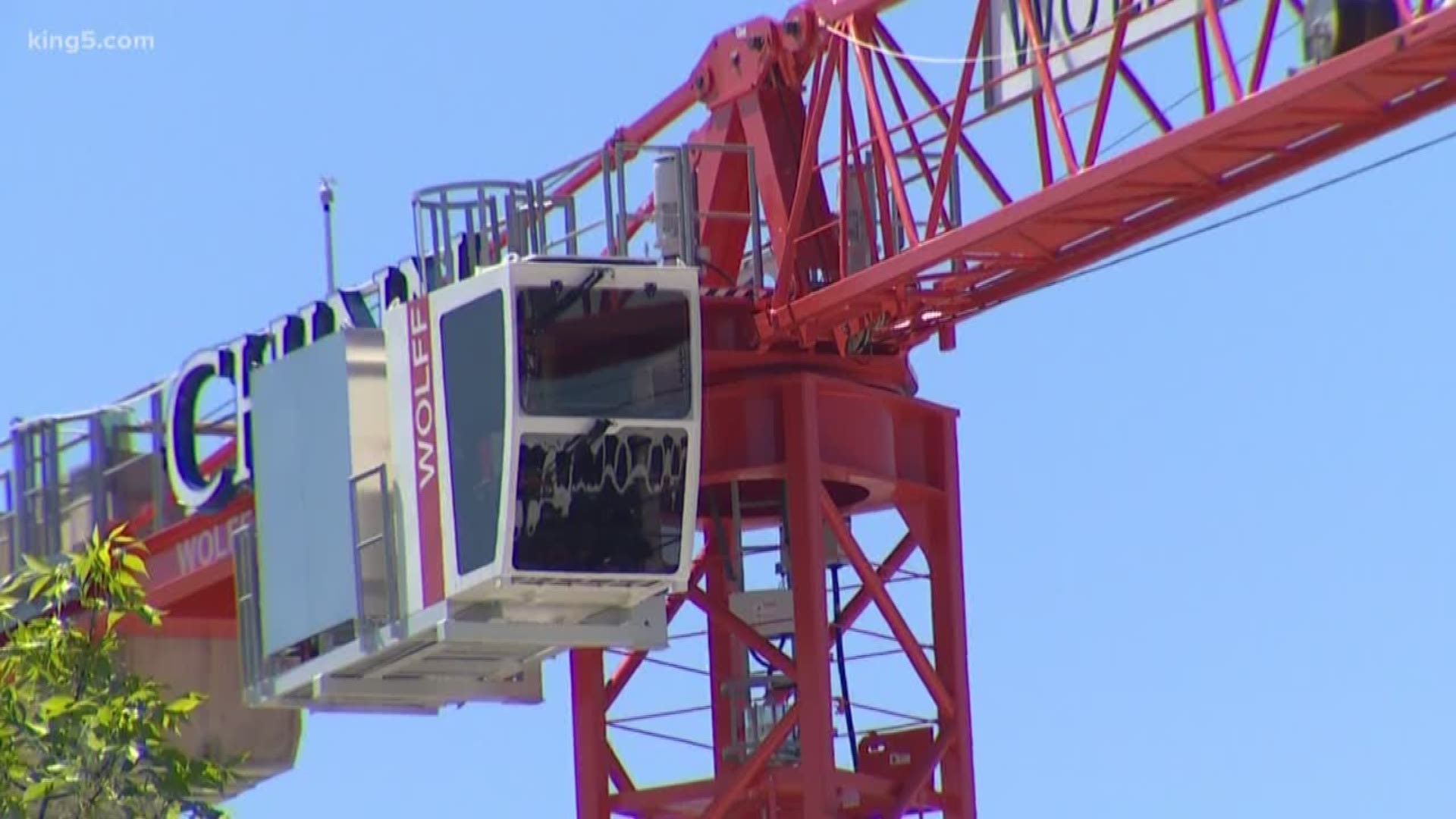Human error may have caused a crane collapse that killed four people and injured four others over the weekend, experts say.
Attorney David Kwass says weather likely isn't a key reason why the crane toppled over. He has litigated construction crane accidents in the past.
On Monday, the Washington Department of Labor and Industries inspectors completed their work at the scene, The Associated Press reports. It is too early to speculate on the cause, according to L&I spokesperson Tim Church.
A fifth company was brought into the investigation on Monday, according to AP. Seaburg Construction Corp, the employer for the tower crane operator, was included along with GLY Construction, subcontractors Northwest Tower Crane and Omega Morgan, and Morrow Equipment Company.
"GLY and its sub-contractors involved with this tower crane accident are doing everything we can to investigate the incident," the company said in a written statement. "We are cooperating fully with investigators and assisting the local authorities. At this early stage of the investigation, we have no further details."
The two ironworkers who were killed in the collapse, Travis Corbet and Andrew Yoder, were both journeymen and experienced in working on tower cranes, according to Iron Workers Local Union #86 Business Manager Chris McClain.
Kwass, a Pennsylvania-based attorney, said the video from Seattle is similar to a crane collapse in Dallas in 2012.
"The base section did not move or move a lot," said Kwass.
He said video seems to show the iron workers struggling to connect the crane with another assist crane. Kwass said if the disassembly of the bolts was done prematurely, only the slightest adjustment of weight at the top could result in the crane to tumble.
"There was a whole lot of movement of the assist crane because of the wind,” the attorney said.
It will be just one of the factors state investigators look at over the next few months. The Dallas case also involved freak wind gusts and were initially thought to be a main factor. Although, further investigation determined the process of prematurely 'de-pinning' the bolts was an issue in the fatal accident.
State laws changed after the 2006 fatal Bellevue crane collapse, requiring stricter check of cranes and their operators. However, there is not mandated regulation of city streets while the difficult work is performed, according to Seattle Department of Transportation Director Sam Zimbabwe. At a joint press conference Sunday, he acknowledged there is no mandate, but said the city often tries to work with developers and contractors on road accessibility issues.
In this case, Mercer was wide open to car, bike and pedestrian traffic. Two of the fatalities were on the ground, and other people were also injured while driving vehicles.
The project manager for a Capitol Hill complex acknowledged that his group is scheduled to take down a crane on Thursday but will likely delay the plans based on Saturday's events. The Seattle City Council is expected to question Department of Construction and Inspections Director Nathan Torgelson on Wednesday at a public meeting in council chambers.

